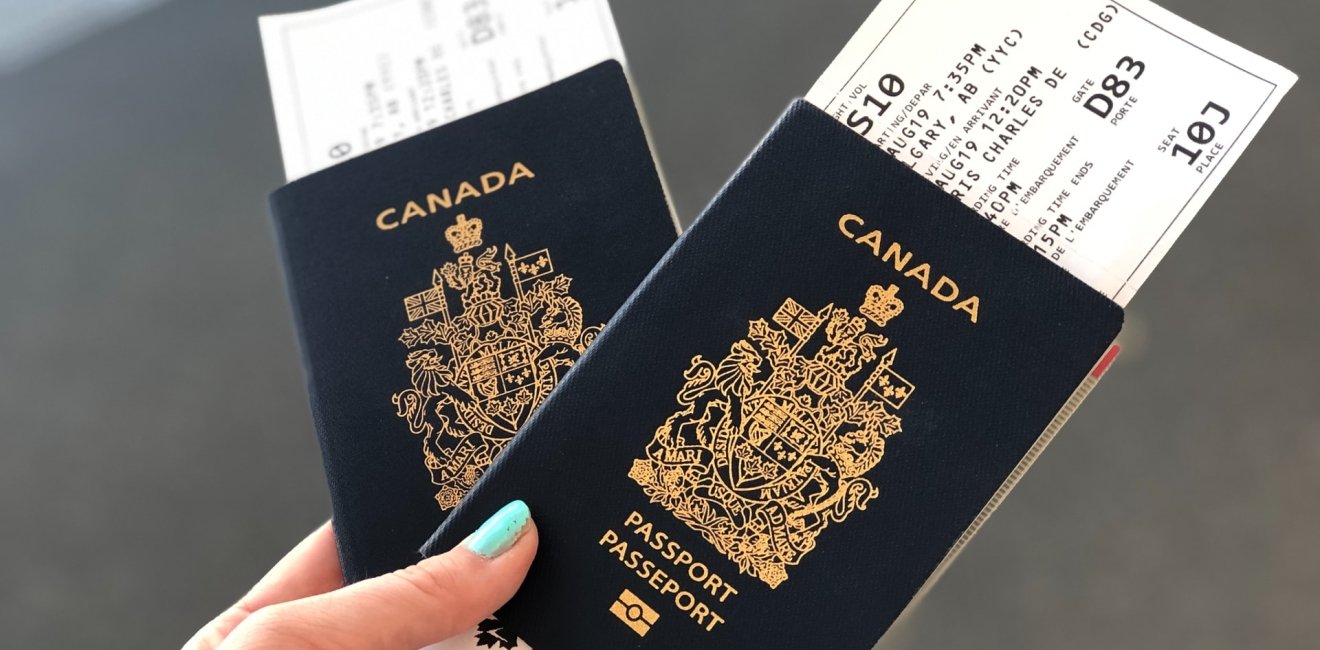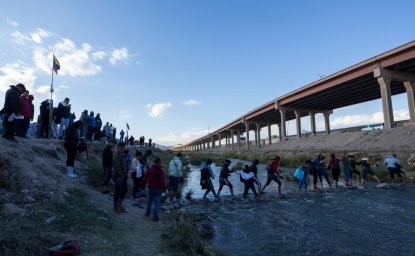Geography favors Canada. Three borders are with the vast Atlantic, Pacific, and Arctic Oceans, and the fourth is with the United States, a country with a comparable level of development. The United States, however, has a 2000 mile-long border with Mexico, which has a per capita GDP one sixth of that of the United States. Mexico also is a transit corridor for immigrants from third countries to the United States, not only third countries in Latin America, but also Asia, Africa, and the Middle East.
Family Reunification the “Bedrock” of U.S. Immigration; Canada Privileges Economic Benefit
Both the United States and Canada allow immigration both for family reunification and to meet the countries’ economic needs. However, Canada’s approach to the former is more restrictive. It allows citizens and permanent residents to sponsor spouses or common law partners, dependent children, parents, and grandparents. One may sponsor brothers, sisters, nephews, nieces, or grandchildren only if they are orphaned. None of these programs has a numerical cap. [1]
By contrast, the American approach to family reunification, which one supportive organization has termed “the bedrock of U.S. immigration policy,”[2] is much more expansive. Immediate relatives (spouses, minor children, adopted orphans, and parents) of U.S. citizens are admissible without any numerical ceilings. But a broad range of other relations are allowed in, subject to caps, in the different categories through a cascading system of preferences for, first, unmarried adult children of U.S. citizens, followed in turn by spouses and unmarried children of U.S. permanent residents, married sons and daughters of U.S. citizens, and brothers and sisters of adult U.S. citizens. No single country can account for more than seven percent of admissions.
Canada’s immigration system looks more welcoming, but it is economic-based. In 2017, Canada admitted immigrants under its family category at a rate of 0.23 percent per capita, a surprisingly equal rate to that of the United States. But in Canada, the family category only accounted for 28 percent of legal immigrants admitted that year, while 57 percent of its legal immigrants fell under the economic category (family included).[3] The United States, admitted legal immigrants under its family category at the same rate of 0.23 percent per capita which accounted for 68% of U.S. legal immigration that year.[4] Per capita, Canada welcomed the same amount of immigrants under its family category and 12 times more legal immigrants under its economic category as the United States that year.[5]
In Canada, admission as an economic immigrant is based on a points system, in which the more points that are earned, the better one’s chances are of being allowed to enter. Different categories exist—skilled worker, skilled trades, and “Canadian Experience,” (a mechanism for temporary foreign workers and foreign graduates of Canadian universities to convert to permanent resident status). Economic immigrants may bring their immediate families with them into Canada. Factors that affect points include age, education level, English or French language proficiency, work experience, and the presence of family in Canada. A job offer is one, but by no means the only or most important factor. There is an “express entry” program for employment categories that are in particular demand.
The American program for economic immigration is much more limited. While special visas exist for temporary workers (intra-company transfers, agricultural workers, etc.), permanent economic immigration is subject to a cap of 140,000 entrants per year (including family members).[6] These are divided among different categories, such as “persons of extraordinary ability,” persons with advanced degrees, and skilled workers.[7]
Unauthorized Immigration: Big Issue for the United States, Not so Much for Canada
In general, Canada appears to have a much more liberal immigration policy than the United States. In 2019, with 11 percent of the United States’ population, Canada receives 32 percent of the number of legal immigrants that of the United States receives.[8] However, the United States, unlike Canada, has an estimated 12 million unauthorized immigrants, with the number of entrants in recent years varying from as low as 70,000 per year to a high of 470,000.[9]
While Canada does not appear to keep comparable statistics, its problem appears to be much smaller, though not trivial. Canada maintains tight border restrictions on who comes in on temporary visas to reduce the risk of potential irregular immigrants entering Canada on such visas.[10] Between 2012 and 2017, temporary travel refusals climbed from 18 percent to 26 percent, and in the first quarter of 2018, hit 30 percent.[11] The relatively small scale of irregular immigration to Canada also may be seen by the number of irregular border crossers (people crossing the border between immigration posts) making claims for refugee status. Between 2017 and 2019, a total of 54,739 persons made such claims, of which 12,255 were accepted, 10,627 rejected, and the remainder withdrawn, abandoned, or pending.[12]
Again, Canada is not immune from irregular entry. Relatively recent events in the United States led to a surge in irregular border crossings into Canada. After President Trump announced in 2017 his intention to end Temporary Protected Status for unauthorized immigrants from several countries, there was a spike in such crossings, especially by Haitians, who sought refugee status after entering Canada.[13] The crisis eased after U.S. courts struck down President Trump’s order and Temporary Protected Status for persons originating from those countries has been renewed through 2021 while appeals in the courts continue. During COVID-19, Canada and the United States have tightened their policies; between United States and Canada, refugee claimants entering at unofficial ports of entry will be returned to the country they first stepped into, rather than being allowed to stay in the second country while their claims are adjudicated. The United States has indicated that it is its intention to return these persons to their countries of origin where possible, raising the question in Canada of whether the United States is a “safe third country” to which Canada can engage in deportation (“refoulement”) under its international obligations.
Refugees: Heading In Different Directions
Both the United States and Canada are signatories of relevant United Nations conventions allowing persons to enter a country from abroad claiming refugee status and have systems for adjudicating claims for refugee status or asylum. (Refugees are seeking to enter a country on the basis of a “well-founded fear of persecution” for a specific ground of race, religion, nationality, political opinion, or membership in a specific social group. In contrast, asylum seekers either present themselves at a port of entry or enter the proposed country of refuge, either unauthorized or on another status, e.g., with a tourist visa.)
Although the two countries thus have similar criteria for asylum and refugee statuses, implementation has diverged, as the Trump administration has taken an increasingly hard line. While U.S. law gives immigration officials discretion over whether or not to detain asylum seekers as opposed to letting them enter and subsequently appear for their hearing, detention has become increasingly the preferred solution, especially in response to pressures at the border with Mexico. The detention of unaccompanied minors has become a major political and legal issue. Although detention of asylum seekers is provided for under Canadian law, the criteria for its use appear to be tighter. Detention of minor children is considered to be a “last resort” option under governing regulations. Detention is largely reserved for the relatively few who enter as “irregular arrivals,” i.e., not presenting themselves at a port of entry, or for potential security risks. Canada had 6251 immigration detainees in 2017 compared with 323,591 held by the United States that same year.[14] The United States has more than one million asylum seekers awaiting adjudication of their claims.[15] In 1919, the United States implemented a “remain in Mexico” policy under which non-Mexican asylum seekers would not be allowed into the United States until after they were granted asylum.
The United States imposes fixed ceilings on the number of refugee admissions, which have been progressively lowered by the Trump administration, from 50,000 for 2017, (slashed from the 85,000 level for 2016 set by the Obama administration) to 45,000 for 2018, 30,000 for 2019, and most recently 18,000 for 2020.[16] As a result, refugee admissions for the United States are now dipping below those of Canada, which does not set formal refugee caps, but instead has softer “targets” with high and low ranges. Canada’s refugee admission target for 2020 is 31,700.[17] Canada’s refugee admission levels have been generally on an upward trend since 2014, although they are below a spike seen in 2016 when a program of admission for Syrian refugees existed.
Immigration After COVID-19
What has been the impact of the COVID-19 crisis been on American and Canadian Immigration? Immigration to Canada has obviously been affected by the decrease in flights and the closure of the U.S. border to most traffic. However, those seeking to immigrate with applications approved prior to March 18 will be processed if they are able to arrive.[18] Extensions will be given to those whose documents expire before they are able to travel. Refugee processing will be “temporarily paused” and any refugee claimant seeking to enter from the United States will be returned.[19] The United States has taken a more categorical approach. The entry of economic-based immigrants has been suspended for sixty days (renewable) because of the “impact of foreign workers on the United States labor market, particularly in an environment of high domestic unemployment and depressed demand for labor.”[20] Exceptions are made for certain categories such as health and agricultural workers. Using authorities under public health laws, the removal of asylum-seekers from the United States has been expedited.[21]
As for the longer term, in the United States, it is reasonable to expect that President Trump will maintain COVID-19-based measures to further tighten immigration through to the end of his present term, and beyond. What a President Biden would do is unclear. (Unless extended, the newest executive-ordered immigration freeze will end before the next presidential term begins.) Biden has sought to distance himself from some of the tougher border enforcement policies of the Obama administration and promised to send an immigration proposal to Congress on his first day in office.[22]
In Canada, questions are arising as to the viability of current immigration targets, which are programmed for 341,000 in 2020, 351,000 in 2021, and 361,000 for 2022.[23] Immigration Minister Mendocino was pointedly asked in a Parliamentary Question from the opposition if in light of the lingering economic impact Canada can, “accommodate added to our population in the foreseeable future an additional one percent of immigrants and refugees.”[24] While he declined to say whether or not the targets would be changed, he stressed that immigration was an “enduring value” for Canadians and that immigrant labor would play an important role in Canada’s economic recovery.[25] Thus, it appears that while Canada will likely escape the acrimony that has characterized the immigration debate in the United States, the new environment of COVID-19 is moving immigration further into the foreground of its political life.
[1] Immigration, Refugees and Citizenship Canada, “Family Sponsorship,” Government of Canada, (June 2020).
[2] Philip E. Wolgin, “Family Unification is the Bedrock of U.S. Immigration Policy,” Center for American Progress, (February 12, 2018).
[3] David Bier, “Canada Will Up Immigration to 1% of its Population, 2.6 Times the U.S. Rate,” CATO Institute, (November 2018).
[4] Ibid.
[5] Ibid.
[6] American Immigration Council, “How the American Immigration System Works,” (October 10, 2019).
[7] Ibid.
[8] Homeland Security, “Legal Immigration and Adjustment of Status Report Fiscal Year 2019, Quarter 4,” (March 2020).
Canada Visa, “Canada's Multi-Year Immigration Plan 2018 to 2021,” (June 2020).
[9] Office of Immigration Statistics, “Estimates of the Unauthorized Immigrant Population Residing in the United States: January 2015,” Department of Homeland Security, (January 2018).
[10] Geoffrey York and Michelle Carbert, “Access denied: Canada’s refusal rate for visitor visas soars,” The Globe and Mail, (July 2018).
[11] Ibid.
[12] Immigration and Refugee Board of Canada, “Irregular Border Crossers Statistics,” (May 2020).
[13] Susan Ormiston, “How Thousands of Asylum Seekers have Turned Roxham Road into a De Facto Border Crossing,” CBC News, (September 29, 2019).
[14] Global Detention Project, “Canada Immigration Detention,” (June 2020), and
Global Detention Project, “United States Immigration Detention,” (June 2020).
[15] Bureau of Population, Refugees, and Migration, “Refugee Admissions,” U.S. Department of State, (June 2020).
[16] Migration Policy Institute “U.S. Annual Refugee Resettlement Ceilings and Number of Refugees Admitted, 1980-Present,” (June 2020).
The White House, “Presidential Determination on Refugee Admissions for Fiscal 2020,” (November 1, 2019).
[17] Immigration, Refugees and Citizenship Canada, “Notice—Supplementary Information 2019-2021 Immigration Levels Plan,” Government of Canada (October 2018).
[18] Government of Canada, “Coronavirus disease (COVID-19): Immigration applicants,” (June 22, 2020).
[19] Immigration, Refugees and Citizenship Canada, “Coronavirus disease (COVID-19): Refugees, asylum claimants, sponsors and PRRA applicants,” (May 14, 2020).
[20] The White House, “Proclamation Suspending Entry of Immigrants who Present Risk to the U.S. Labor Market During the Economic Recovery Following the COVID-19 Outbreak,” (April 22, 2020).
[21] Yael Schacher and Chris Beyrer, “Expelling Asylum-Seekers is not the Answer: U.S. Border Policy in the Time of COVID-19,” Refugees International, (April 27, 2020).
[22]Jenna Johnson, “Joe Biden Fights Skepticism with a Simple Immigration Message: I’m not Trump or Obama,” The Washington Post, (May 19, 2020).
[23] Canada Visa, “Canada's Multi-Year Immigration Plan 2018 to 2021,” (June 2020).
[24] The Canadian Press, “Immigration will be Key in Post-Pandemic Era: Liberal Minister Mendocino,” The National Post, (May 15, 2020).
[25] The Canadian Press, “Immigration will be Key in Post-Pandemic Era: Liberal Minister Mendocino,” The National Post, (May 15, 2020).
Author

Former member of the Senior Foreign Service of the U.S. Department of State

Canada Institute
The mission of the Wilson Center's Canada Institute is to raise the level of knowledge of Canada in the United States, particularly within the Washington, DC policy community. Research projects, initiatives, podcasts, and publications cover contemporary Canada, US-Canadian relations, North American political economy, and Canada's global role as it intersects with US national interests. Read more





